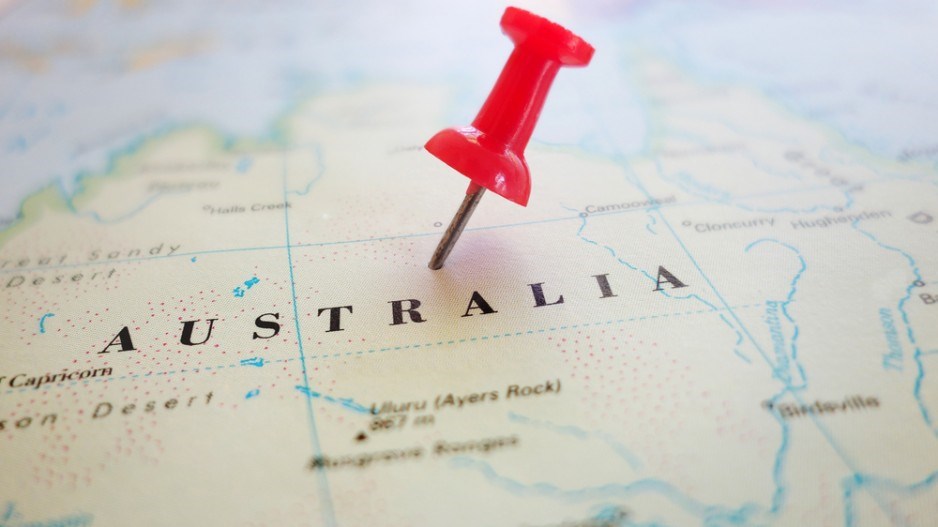A new wave of LNG supply coming onstream from Australia, combined with lower oil prices resulting in slumping LNG prices, could delay final investment decisions (FIDs) for LNG projects in British Columbia.
“There was an initial chasing of demand that was there prior to 2020,” said Mary Hemmingsen, leader for LNG, power and utilities with KPMG Canada, noting the drop in oil prices has created uncertainty —traditionally, LNG prices have been linked to the price of oil. “There’s also been a glut of new supply coming in from Australia to fill the demand.
“With the reduced oil prices, there is a reduced LNG price … because still, for the most part, LNG is indexed off of oil prices, so it hurts the affordability and the economics of the project.
“This means the price that buyers are prepared to pay has been lowered, and also because the price of oil is down, it challenges the proponents to reduce capital expenditures.”
Chevron Corporation, for example, said early in 2015 it was “significantly pacing” its spending on the Kitimat LNG project due to market conditions. Its partner in the project, Australia’s Woodside Petroleum Limited, has repeatedly stated the focus this year was on drilling the upstream resource in the Liard Basin, and on cost reduction.
Petronas, meanwhile, issued a “conditional” final investment decision earlier this year, and the company is “hopeful” it will receive its environmental certification from the Canadian government shortly.
First Nations issues have also made headlines — the Lax Kw’alaams First Nation, for example, announced it was proceeding with a title action on Lelu Island and Flora Bank, an area of critical fisheries habitat located in the estuary of the Skeena River.
“It’s definitely a cooler environment,” Hemmingsen said. “It is an appropriate time to … take stock of the cost side and revisit how, on the cost side, the economics can be improved, because there was just such rampant cost escalation in Australia, [for example].”
Smaller scale projects a solution for the near-term in B.C.?
Could smaller scale projects be a solution?
“There’s two sides to that issue; on the one hand, yes, it would seem that this type of environment would favour smaller capital commitments and more niche types of opportunities.
“But at the same time … one of the significant factors that’s driving improved economics is scale — so it’s kind of go big or go home — improve your economics by scale. In fact, that is one of the really significant merits or virtues of Canada supply; the depth of the resource and the scalability is so significant.”
Supplier of choice
In a recent KPMG report, questioning whether Canada is a supplier of choice for Asian buyers, it “needs to be answered as a qualified ‘yes.’”
The current demand shortfall window “is no doubt closing” and with short-term circumstances and medium-term uncertainties buffeting the industry. Today’s Asian buyer appetite is reduced, and in turn has reduced, but not eliminated, interest in Canadian LNG, the report stated.
Western Canada offers many advantages to Asian LNG buyers. Canada’s relative advantages are compelling and many of the perceived disadvantages can be addressed with disciplined project development to realize the Canadian potential to be an LNG supplier of choice, KPMG stated.
To be successful, projects and proponents will need to strive to align with Asian buyer’s interests, demonstrate they can address stakeholder and regulatory complexity as well as a high cost environment, while leveraging the Canadian advantages.
“These advantages include reliable, long-term supply benefitting from a supportive and stable political environment, huge gas formations, a short delivery route to market, as well as portfolio considerations of value chain control, ownership position, and risk management mechanisms as the hallmark of Canadian supply,” the report stated.
The cyclical nature of the LNG industry suggests a “re-pacing and re-positioning” of Canadian LNG to Asian buyers may be the winning basis to carry Canada on the next wave to navigate LNG to Asian ports.
“If this holds true, the opportunity may be fewer, higher quality projects sanctioned now with more coming later. And through staging and repositioning, proponents can improve on Canada’s competitive position to Asian buyers as a supplier of choice, including demonstrating Canada’s ability to work through the domestic complexities of developing a nascent industry in an environment of strong stakeholder expectations and cost escalation challenges,” the report stated.




